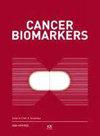STEAP3 is a prognostic biomarker that promotes glioma progression by regulating immune microenvironment and PI3K-AKT pathway
IF 2.2
4区 医学
Q3 ONCOLOGY
引用次数: 0
Abstract
BACKGROUND: STEAP3 is a metal reductase located on the plasma membrane close to the nucleus and vesicles. Despite numerous studies indicating the involvement of STEAP3 in tumor advancement, the prognostic value of STEAP3 in glioma and the related mechanisms have not been fully investigated. METHODS: Initially, we examined the correlation between STEAP3 expression and the survival rate in various glioma datasets. To assess the prognostic capability of STEAP3 for one-year, three-year, and five-year survival, we created receiver operating characteristic (ROC) curves and nomograms. Additionally, an investigation was carried out to examine the mechanisms that contribute to the involvement of STEAP3 in gliomas, including immune and enrichment analysis. To confirm the expression of STEAP3 in LGG and GBM, tumor tissue samples were gathered, and cell experiments were conducted to explore the impacts of STEAP3. The function of STEAP3 in the tumor immune microenvironment was assessed using the M2 macrophage infiltration assay. RESULTS: We found that STEAP3 expressed differently in group with different age, tumor grade IDH and 1p19q status. The analysis of survival illustrated that glioma patients with high level of STEAP3 experienced shorter survival durations, especially for IDH-mutant astrocytoma. Cox analysis demonstrated that STEAP3 had potential to act as an independent prognostic factor for glioma. The predictive value of STEAP3 for glioma prognosis was demonstrated by ROC curves and nomogram. Immune analysis showed that STEAP3 may lead to a suppressive immune microenvironment through the control of immunosuppressive cell infiltration and Cancer-Immunity Cycle. Combining enrichment analysis and cell experiments, we discovered that STEAP3 can promote glioma progression through regulation of PI3K-AKT pathway and M2 macrophage infiltration. CONCLUSION: STEAP3 plays significant roles in the advancement of glioma by regulating immune microenvironment and PI3K-AKT pathway. It has the potential to serve as a therapy target for glioma.STEAP3是一种预后生物标志物,通过调节免疫微环境和PI3K-AKT通路促进胶质瘤进展
背景:STEAP3是一种位于靠近细胞核和囊泡的质膜上的金属还原酶。尽管大量研究表明STEAP3参与肿瘤进展,但STEAP3在胶质瘤中的预后价值及其相关机制尚未得到充分研究。方法:首先,我们在各种胶质瘤数据集中检测STEAP3表达与存活率之间的相关性。为了评估STEAP3对1年、3年和5年生存期的预后能力,我们创建了受试者工作特征(ROC)曲线和nomogram。此外,还进行了一项调查,以检查STEAP3参与胶质瘤的机制,包括免疫和富集分析。为了确认STEAP3在LGG和GBM中的表达,我们收集肿瘤组织样本,通过细胞实验探讨STEAP3的影响。采用M2巨噬细胞浸润法评估STEAP3在肿瘤免疫微环境中的功能。结果:我们发现STEAP3在不同年龄、肿瘤级别IDH和1p19q状态组中表达不同。生存分析表明,STEAP3水平高的胶质瘤患者生存时间较短,尤其是idh突变的星形细胞瘤患者。Cox分析表明,STEAP3有可能作为胶质瘤的独立预后因素。通过ROC曲线和nomogram验证STEAP3对胶质瘤预后的预测价值。免疫分析表明,STEAP3可能通过控制免疫抑制性细胞浸润和cancer - Immune Cycle导致一个抑制性免疫微环境。结合富集分析和细胞实验,我们发现STEAP3通过调控PI3K-AKT通路和M2巨噬细胞浸润促进胶质瘤的进展。结论:STEAP3通过调节免疫微环境和PI3K-AKT通路在胶质瘤的进展中发挥重要作用。它有可能成为神经胶质瘤的治疗靶点。
本文章由计算机程序翻译,如有差异,请以英文原文为准。
求助全文
约1分钟内获得全文
求助全文
来源期刊

Cancer Biomarkers
ONCOLOGY-
CiteScore
5.20
自引率
3.20%
发文量
195
审稿时长
3 months
期刊介绍:
Concentrating on molecular biomarkers in cancer research, Cancer Biomarkers publishes original research findings (and reviews solicited by the editor) on the subject of the identification of markers associated with the disease processes whether or not they are an integral part of the pathological lesion.
The disease markers may include, but are not limited to, genomic, epigenomic, proteomics, cellular and morphologic, and genetic factors predisposing to the disease or indicating the occurrence of the disease. Manuscripts on these factors or biomarkers, either in altered forms, abnormal concentrations or with abnormal tissue distribution leading to disease causation will be accepted.
 求助内容:
求助内容: 应助结果提醒方式:
应助结果提醒方式:


